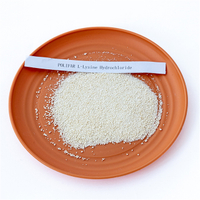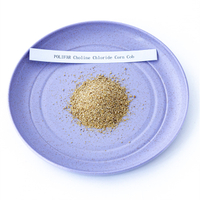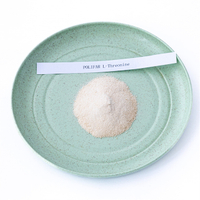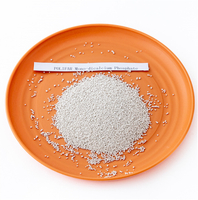Views: 0 Author: Site Editor Publish Time: 2021-06-21 Origin: Site








Feed grade L-Threonine is often packed in common woven bags and placed in piles. Although it seems to us that livestock require little amount of L-Threonine, it is essential in reality. Because the synthetic amount of L-Threonine in livestock is not enough to meet their daily consumption, farmers need to choose appropriate method and amount according to the type and growth cycle of the livestock, preventing it from becoming a reason for restricting the growth of livestock.
Here is the content list:
l What is meaning of L-Threonine belonging to restrictive amino acid?
l What nutritional functions does L-Threonine have?
l Is it cost-effective to add L-Threonine additives?
L-Threonine has varying degrees of deficiency in grains. According to related studies, in corn-type feed, L-Threonine is the second limiting amino acid for sheep; when the metabolic protein is mainly provided by microbial protein, L-Threonine crystal is the third limiting essential amino acid for growing cattle; L-Threonine It is also the third limiting amino acid after methionine and lysine in poultry feed.
Most of the amino acids added in the feed are essential amino acids, and the amount of the first and second restrictive amino acids must meet the standard. For animals with different growth stages and different formulas, feed grade L-Threonine belongs to different restriction levels.
Only when the content of the first restrictive amino acid reaches the standard, can the second and other grades of L-Threonine be better utilized. Therefore, when adding amino acid feed additives, the first restrictive amino acid should be met first, and then other restrictive amino acids should be considered in turn.
Animals cannot synthesize L-Threonine autonomously, but it is a necessary raw material for protein synthesis in animals. Therefore, livestock must obtain the threonine they need from feed. Adding crystal L-Threonine to feed can further improve the amino acid balance of feed and reduce the cost of feed formulation.
L-Threonine can promote protein synthesis in the body and save dietary protein. For example, adding 0.1%, 0.2% and 0.3% feed grade L-Threonine to the low-protein diet can significantly improve the laying rate, feed utilization rate and eggshell quality of laying hens, and promote the deposition of protein in eggs.
Fatty liver may be caused by a single or comprehensive metabolic defect. Studies have shown that imbalance or insufficient supply of feed additives may cause fatty liver metabolism defects in livestock, while the addition of L-Threonine to the feed of grass carp in the mid-growth period can significantly reduce the crude fat content.
More than 60% of L-Threonine is absorbed by the intestines of livestock. The integrity of the mucus layer in the intestine and the function of epithelial cells are closely related to nutritional status, especially the level of L-Threonine in the feed.

In the past, the price of L-Threonine was quite high. Compared with the optimal physiological requirements of livestock, farmers still need to consider the wallet more. Now, L-Threonine has a new extraction process, both in purity and sanitary conditions have made great progress, thus opening up the application field of feed additives.
1. Adding L-Threonine can correct the variation of amino acid content and digestibility in feed, so it can improve amino acid balance and improve animal growth performance.
2. By applying L-Threonine, more kinds of feed materials can be used. Therefore, grains and grain by-products can be used with less restriction, and high-priced high-protein feed materials that can cause digestive disorders can be used less.
3. The use of L-Threonine can lower the level of feed crude protein, and make the amino acid composition more in line with the ideal protein balance, significantly reducing nitrogen excretion, which will have a positive effect on environmental protection.
As the concept of proportioning balance becomes more popular, L-Threonine has gradually become the main limiting factor affecting the performance of livestock and poultry. Especially when L lysine hydrochloride is added to low-protein diets, L-Threonine has increased its restriction level. Polifar Group reminds you that when using L-Threonine, it must be based on the expert's formula and cannot be changed arbitrarily. If you have any questions in the process of using, you can consult us.






